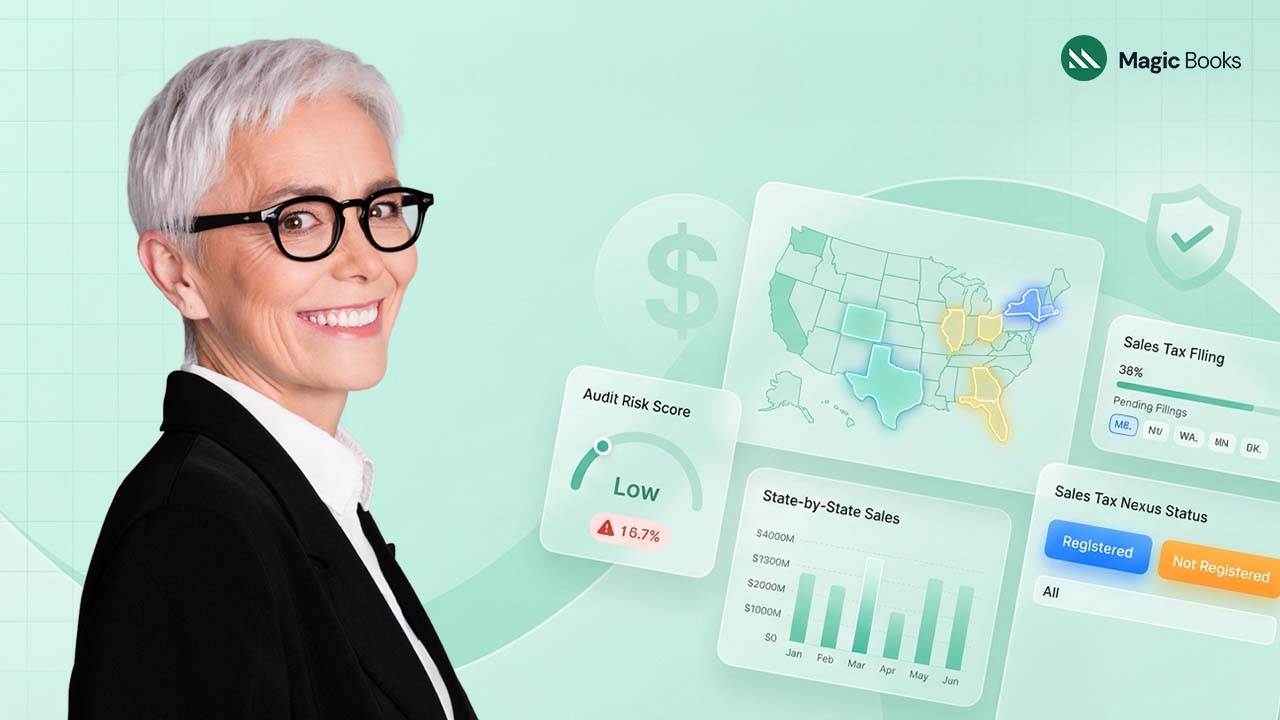Cash flow management will be the most critical factor that may kill or sustain a small business. Cash flow is just the in and out movement of money, and an unmanaged profit-making business can get into financial stress very fast. In the next blog, we’ll share ideas through real-life ways by which cash flow can be enhanced for small businesses.
1. Understand Your Cash Flow Cycle
Identify Your Cash Flow Cycle: The best improvement you could make on cash flow management is the cash cycle that understanding your business recognizes. This term is the period taken for cash to pass through all stages in your business-from purchasing inventory and services for resale to collecting cash on sales.
Monitor Regularly: Monitor a cash flow statement by breaking down every inflow and outflow within a given period so you’re ready to handle the shortfalls or surpluses of cash flows.
2. Forecasting Cash Flow
Project Future Cash Flow: The best improvement you could make on cash flow management is the cash cycle that understanding your business recognizes. This term is the period taken for cash to pass through all stages in your business-from purchasing inventory and services for resale to collecting cash on sales.
Use Financial Software: Accounting software is used to help generate cash flow forecasts. QuickBooks, Xero, and Wave can help you create more accurate projections while providing real-time updates.
3. Optimize Receivables
Invoice Promptly: Send invoices within minutes of sales or service delivery. Invoice delay often leads to delayed payments that make way for cash flow problems.
Implement Clear Payment Terms: Print your payment terms on your invoice. Most will be net 30, but an industry may offer you a discount for early payment or a fee for late payments.
Follow Up on Receivables: Periodically track outstanding invoices and follow up on good customers who don’t pay. You can automate reminder letters and accelerate collections in your accounting software.
4. Manage Payables Strategically
Negotiate Payment Terms: Get your suppliers to agree to longer payment terms while ensuring you pay no late fees. Pay your bills on time and reduce your cash burden by extending your payment terms.
Stagger Payments: This avoids bunching all the payments into one date. Staggered payments help smooth out cash flow throughout the month.
Take Advantage of Early Payment Discounts: If your cash flow allows it and suppliers offer the option of an early payment discount, then save on money.
5. Control Inventory Management
Optimize Inventory Levels: excess inventory means tying up cash elsewhere in the organization. The inventories can be kept at optimum levels with inventory management software with demand forecasts.
Implement Just-in-Time Inventory: Implement just-in-time (JIT) inventory. This will bring minimal stock you hold anytime, eliminating most holding costs and liberating cash.
6. Manage Expenses Effectively
Review and Cut Unnecessary Costs: Regularly review your business expenses. Cut out unnecessary costs and continue cutting cost measures of the necessary ones.
Create a Cash Reserve: Prepare a cash reserve to fall back on when unexpected expenses or slow business periods occur. I look to have at least three to six months of operating expenses in cash.
7. Utilize Financing Options Wisely
Establish a Line of Credit: Having a line of credit in place can serve as an essential safety valve in cash shortfalls. Open up a line of credit beforehand to draw on funds at the point of need.
Consider Short-Term Loans: Short-term loans can also be viable for short-term cash needs. However, interest rates and terms should be judiciously used to avoid the pitfalls of cash shortages in the long term.
8. Improve Pricing Strategies
Analyze Profit Margins: Periodically check whether products or services are adequately charged to cover costs and deliver the profit margins.
Dynamic Pricing: An organisation may opt for dynamic pricing to change its pricing contingent upon circumstances prevailing at a given time, including demand, market conditions, and competition. That may bring in maximum revenue and cash flow.
9. Enhance Sales and Marketing Efforts
Boost Sales Efforts: Sales can be increased, and therefore cash flow improves. It is, hence, prudent to spend resources on the training of the salespeople, award incentives, and new market ventures.
Effective Marketing Campaigns: Create a budget for marketing programs that have positive payback. A mix of offline and online marketing will likely appeal to a larger population.
10. Leverage Technology
Automate Financial Processes: Use technology to automate the process of invoicing and payment reminders, among others. This reduces human error and cash movement speed.
Real-Time Data Access: Take care to include the availability of real-time financial information. They enable one to make timely, decisive decisions, especially during crucial moments.
11. Offer Flexible Payment Options
Accept Multiple Payment Methods: You make it easy for the client to pay you promptly by accepting credit cards, digital wallets, and bank transfers.
Payment Plans: If you sell a high-ticket item or service, you can offer a payment plan. In this way, customers who could not afford to pay the total amount in advance may now come to you.
12. Strengthen Supplier Relationships
Build Good Relationships: Quality relations with suppliers provide better credit flexibility, and you may negotiate better terms on payment.
Consistent Communication: Keep open lines of communication with your suppliers, informing them of all business needs and any likely delay in payments.
13. Evaluate Business Model
Monitor Business Model Viability: Business models must constantly be reviewed to remain relevant and unprofitable. Identify inefficiencies and potential areas for optimization.
Diversification: Offer a diversified range of products or services for increased earnings. Such steps reduce the risks and enhance liquidation.
14. Improve Customer Retention
Loyalty Programs: Participation in loyalty programs generates more repeat business than bringing in new customers, yet it is inexpensive.
Customer Feedback: Address customer feedback for greater customer satisfaction and retention. Satisfied customers will provide referrals and steady income.
15. Conduct Regular Financial Audits
Internal Audits: Regular internal financial audits help find the errors, inefficiency, and probable places where cost-cutting can be done.
External Audits: Hire external auditors to get a natural, impartial, and unbiased look at your financial health. Their feelings will significantly help you refine your cash flow management plans.
These additional strategies will make your cash flow management processes even more substantial, and thus, your small business’s healthy, sound financial health will remain assured.
Conclusion:
This is what makes any small business grow and stand the test of time. If you know your cash flow cycle, you can predict your subsequent cash flow, give the optimisation to your receivables and payables, control your inventory, manage your expenses, have financing options, improve your pricing strategy, boost your sales and marketing efforts, and be prepared with the technology usage ability that can significantly help in the management of your cash flow in business. These practices will save you from cash shortages and put your business on the way to long-term success.



